Photo
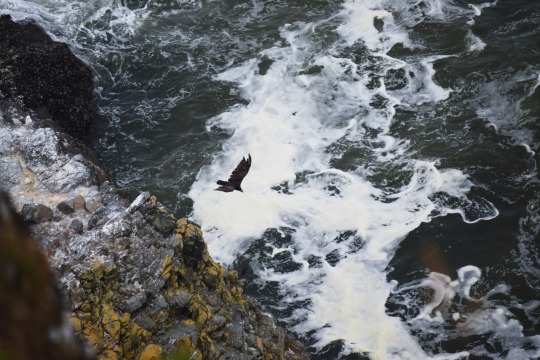
resident (turkey vulture, Cathartes aura)
oregon coast, oregon
july 21, 2022
i think there was an oil spill off the oregon coast this morning, or at least that is what someone told me. as we looked out over the cliff they pointed out the oily film staining the surface of the water. we saw a plane yesterday, flying too low above the coast, trailing exhaust, but we couldn’t find news about it when we got back to town, nor about any oil spill. i wonder if they go unreported if they’re minor, or maybe it’s an algae bloom. the sea foam had a greenish tinge the day before. it made me realize how little i understand about the sea and its inhabitants. i learn the names of these beings but when it comes to mitigation or repair i’m woefully inexperienced. i am almost like a child in this wilderness.
this is a turkey vulture, soaring over the cliff along with cormorants, pelicans, and gulls, who are not pictured. turkey vultures provide an important role in the ecology of a place - they midwife the dead into the ground, neutralize diseases in the corrosive acid of their stomachs, and clean the wilderness. we saw one totter unsteadily into the road further inland, to pluck a carcass from the asphalt. i was grateful to it for not leaving whoever the animal was to be battered by the wheels of the cars.
0 notes
Photo
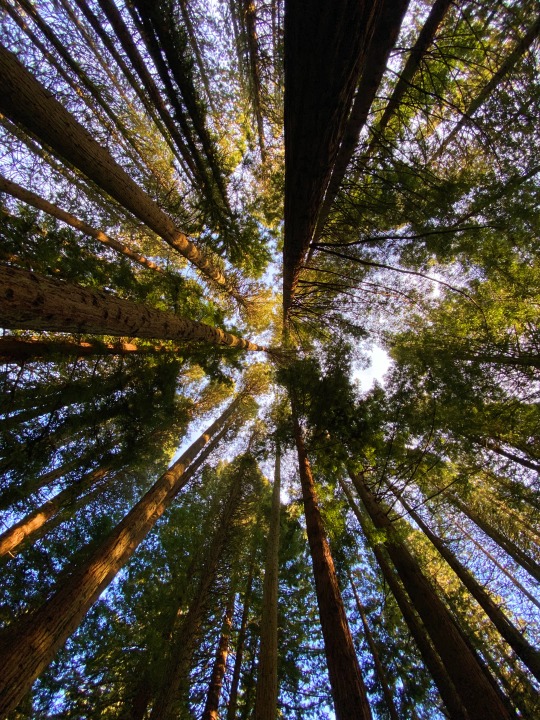
residents (redwoods, multiple species)
hoyt arboretum, portland oregon
february 9, 2022
when i was a child, nature drew me in for connection. it was the dark spaces, dynamic, behind the leaves of the ferns; the rush of snowmelt in the creekbeds in the spring; the two-syllable song of the crows who almost seemed to be saying my name. i was allowed to wander freely in the wilderness behind our house; climb and scramble over the logs that bridged the creeks; forge new paths to favorite spots when the snowmelt obscured the old routes; search for fossils in the rocks and trace them with my fingers; to pick and eat wild blackberries, letting the thorns scratch my legs and my arms. we were taught to respect living creatures, but we were never taught to fear nature, and so to me, nature was safe. even though sometimes i would run, breathless, from the coydogs or raccoons i imagined lurking in the shadows, the natural world itself was a true refuge: a place where i could go to regulate my nervous system, though i never thought of it in those terms. as a kid, it just simply was what it was: a deep, safe, and loving relationship that i didn’t think of as remarkable in the slightest.
while training as a therapist, i found myself drawn to questions of our nervous systems and our maps of attachment. it didn’t interest me much during the academic portion of my training, but during my clinical year, it became increasingly clear to me that attachment (in other words, relationship) is foundational to our ability to cope with stress. more than that, it’s foundational to our ability to feel a sense of connection, belonging, fulfillment, meaning, and self-regard - all things i consider part of our fundamental rights as living beings on this planet. attachment and polyvagal theorists believe that we are wired to seek out connection, and that ruptures and wounds to our attachment maps (due to trauma, loss, intergenerational wounds, etc.) can lead to barriers in our ability to feel safe in relationship to others. following attachment wounds, relationships can feel existentially unsafe, but at the same time, we’re wired for connection and in fact, need it to survive in this world. it’s a predicament, to be sure, but one that can be attended to, soothed, and healed.
what does all this have to do with this project, or with the ecological crisis? it’s because there is a theory that our attachment maps extend beyond our human relationships, and into our relationships with animals, other living creatures, and with the natural world itself (which is inextricable from the rest of the world, despite me currently naming it as distinct). ecopsychologists and writers such as andy fisher, robin wall kimmerer, david abram, and jenny odell have posited that our relationship to place and to other living beings is essential to our ability to live connected, full lives, and some theorize that ruptures in our relationships to nature can contribute to a whole host of suffering: mental health symptoms, relational disruptions, depression, anxiety, dissociation, etc. it also freezes our ability to respond to the ecological crisis we are currently facing: how can we attune and respond capably to our surroundings when we have been so socialized to live in disconnection? how do we live in right relationship with the world when we can see that there is so much suffering occurring? how do we live in our bodies when the world is hostile to all of us, not only to “nature”? it becomes easier on our nervous systems to simply disconnect.
but we never truly disconnect. we can’t - we are wired for connection. instead, we live in a perpetual state of stress, because disconnection indicates a freeze response, which is a state we reach when it becomes apparent that fight or flight will be useless. but even though we freeze and disconnect, we are still in a state of nervous system distress where our bodies are deeply attuned and vigilant to the threat we perceive around us. when “nature” is threatened, we are threatened - because we are nature, and we live in relationship to nature - and our bodies are acutely aware of this threat, even when our conscious minds are not.
it seems to me that the work of this moment is repairing that connection to the world, to each other, and to ourselves. how do we come home to ourselves and to this planet? it’s not an easy question to answer, and repairing our attachment wounds, while transformative, can feel like a scary process at times. it requires us to be vulnerable, which in turn requires us to be open to grief and loss.
there is a lot to grieve right now. we are living in a world of loss. but opening up to these experiences also feels like coming home. it can be a profoundly moving, grounding, and life-changing process to move through fear and open ourselves up to the joy and the grief of true connection and love. because grief is love - you do not grieve what you do not love - and the pain of being mortal and loving other mortals is that to truly love means that you will also someday grieve. we are taught to fear grief, to avoid it at all costs, but i would argue that the experience of grief is the heart of everything. learning to move within it is to unfreeze. it means connecting to the experience of being alive, and this connection is what allows us to mitigate and repair what can be repaired, to grieve what is lost, and to midwife a new phase of life into existence.
i think about the way that nature reached out, and still reaches out, for connection with me. i don’t want to turn away to avoid ever feeling loss. grief will not kill us, but disconnection will. i choose grief.
#cascadia bioregion#cascadia census#climate change#climate hope#climate courage#attachment#attachment theory#polyvagal theory#nature#redwoods#ecopsychology
0 notes
Photo

resident (cottontail; genus: Sylvìlagus)
rooster rock, columbia river gorge
june 15, 2022
this rabbit had a little companion a bit further along the edge of the vining blackberry; both of them sharing a space with the men lounging nude among the sharp grasses. the columbia river had flooded and submerged the entirety of the beach, and the human residents who usually lounge on that pale crescent of sand were pushed back into the thorns and bushes usually only frequented by the rabbits, chipmunks, thrushes, sparrows, and woodpeckers. the place was more subdued than usual, our bodies perhaps aware on some level of being interlopers on this part of the land. immediately west of the cottontails, a man sat reading a book about sailboats, while another lounged in a hammock strung between two hardy, twisted shrubs. their movements were slow; their gazes soft.
i have noticed that upon spotting a rabbit in the wild, a hush will fall over all who are present. something happens in our nervous systems when we encounter other beings: our living bodies begin to co-regulate with the bodies of the wild creatures around us, with the breath of the air in the trees and the shifting sunlight glowing and blinking out like sparks within the leaves. i think we will tend to match the nervous system of the animal we encounter, so a hush falling over a group that is connecting with a rabbit makes sense, whereas making eye contact with a steller’s jay is a more lively experience, as they behold you with their exacting, somewhat chaotic, gaze.
as for spotting rabbits: you are unlikely to see cottontails on windy days - the wind blows through their tall ears and obscures their hearing, and because they are prey for nearly every predator you can imagine, they will stay huddled together in their burrows until they once again have full faculty of their senses. for a prey animal known for their skittishness, i’m often surprised by how leisurely their flight can be. these rabbits regarded us for quite awhile, only hopping away when another person came down the path, and even then their flight had a somewhat lazy air to it. you’re most likely to see them at the hours of dusk and dawn, and if you see one it’s more than likely that there are a few more a little ways off. because we saw them around a blackberry thicket, it’s quite possible we were close to their burrow, as they tend to make homes in these places.
i’ve never seen a rabbit when i’ve been looking for one, though - i think you have to let them surprise you.
#rabbit#cascadia bioregion#cascadia census#pnw#pnwonderland#pacific northwest#oregon#Columbia River Gorge#rooster rock#cottontail
0 notes
Text
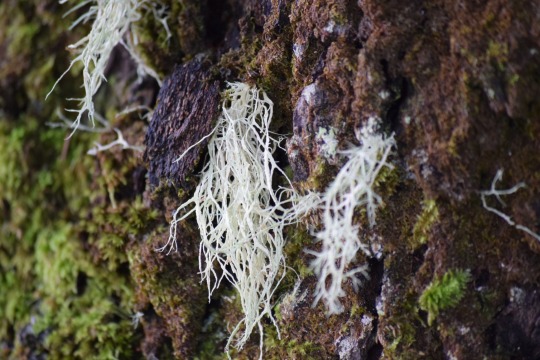

residents, antlered perfume (Evernia prunastri)
indian beach, oregon coast
december 25th, 2019
*Evernia comes from Greek, meaning ‘sprouting well’ (Pojar & McKinnon, 1994). These residents are all over the place, but now that the deciduous canopy has fallen and more sunlight has made it down to the forest floor, these residents have brightened.
*author note: it’s been some time since i posted on the cascadia census! i’m in graduate school so it’s been difficult to find extra time, but this project is still active. :) thanks for reading! also, mosses and lichens are not my strong suit, so please let me know if this is a misidentification. we can learn together!
0 notes
Photo

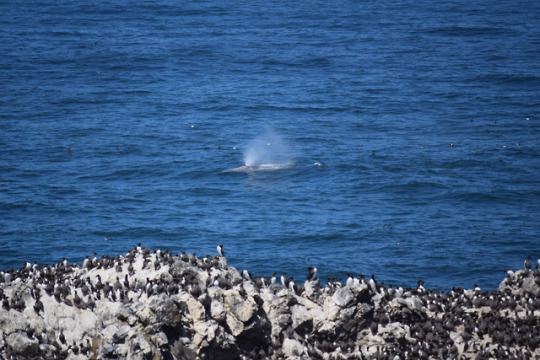

residents (gray whale pod, Eschrichtius robustus)
yaquina head outstanding natural area, oregon coast
july 21st, 2019
it’s difficult to tell how old a gray whale is, but they are thought to live between 55 and 70 years (Department of Fisheries and Oceans). as gray whales get older, they collect barnacles on the surface of their skin, which you can see in the speckled/mottled patterns on these whales’ backs & fins - the barnacles alone can weigh up to 400lbs (The Marine Mammal Center). there are currently two subgroups of grey whales - one of which is in considerable decline, with fewer than 200 remaining. the other, (likely pictured here) has seen its populations recover after hovering on the brink of extinction. a third subgroup went extinct in the 17th century (The Marine Mammal Center). these residents are extremely vulnerable to climate change.
Department of Fisheries and Oceans. 2007. Recovery Strategy for the Grey Whale (Atlantic population) (Eschrichtius robustus) in Canada. Species at Risk Act Recovery Strategy Series. Department of Fisheries and Oceans, Ottawa. iv + 8 pp.
“The Marine Mammal Center.” The Marine Mammal Center, www.marinemammalcenter.org/education/marine-mammal-information/cetaceans/gray-whale.html.
0 notes
Photo


residents (brown pelicans, Pelecanus occidentalis)*
yaquina head outstanding natural area, oregon coast
july 21st, 2019
*these residents dive head-first into the water in search of fish, and have also been known to scavenge and even approach marine workers for food. these residents are extremely climate-endangered and are considered a priority bird for conservation, but conservationists have had success in beginning to restore the populations of brown pelicans, particularly through limiting the presence of pesticides in their habitats. (Audubon)
“Brown Pelican.” Audubon, 3 Mar. 2016, www.audubon.org/field-guide/bird/brown-pelican.
0 notes
Photo

residents (common murre, Uria aalge)
yaquina head outstanding natural area, oregon coast
july 21st, 2019
during mating season, residents (mostly female) return from sea with a fish and ceremonially present it to their mate. these residents are frequently the victims of oil spills and other marine pollution, and their populations are in decline in many areas (Audubon).
“Common Murre.” Audubon, 21 Mar. 2019, www.audubon.org/field-guide/bird/common-murre.
0 notes
Photo


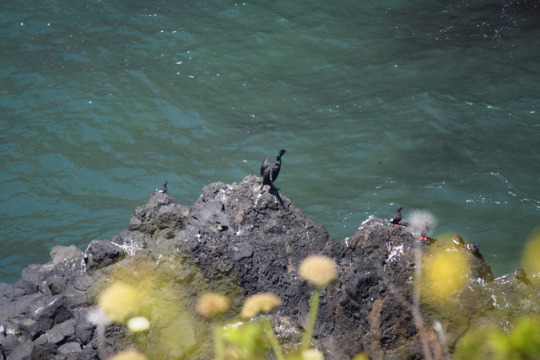
residents (double-crested cormorants, Phalacrocorax auritus)
yaquina head outstanding natural area, oregon coast
july 21st, 2019
double-crested cormorants are very adaptable residents, and are therefore found in a multitude of aquatic habitats. however, they are also susceptible to human activity, and their populations were low before the pesticide DDT was banned in the 1970s. like most residents who depend on a marine habitat, these residents are climate-threatened (Audubon).
“Double-Crested Cormorant.” Audubon, 21 Mar. 2019, www.audubon.org/field-guide/bird/double-crested-cormorant.
0 notes
Photo
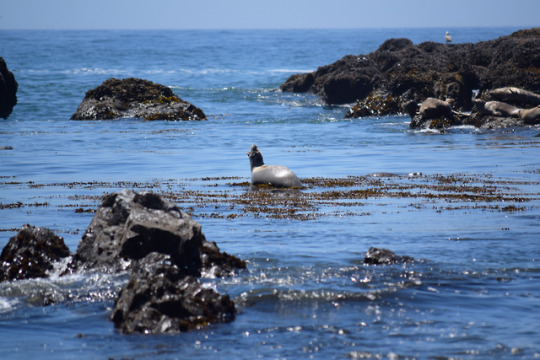

residents (pacific harbor seals, Phoca vitulina)
yaquina head outstanding natural area, oregon coast
july 21st, 2019
these residents spend half their time on land and half their time in the water - even sleeping there. harbor seals are curious and interested in humans, as long as they feel they are at a safe distance. these residents need plenty of space away from humans and a clean, undisturbed habitat in order to give birth to and rear their pups, and harbor seals naturally do not produce many young. as such, harbor seal populations are vulnerable to human activity and climate change, and adult harbor seals have been known to abandon their habitats and their pups if they feel threatened. (The Marine Mammal Center)
“The Marine Mammal Center.” The Marine Mammal Center, www.marinemammalcenter.org/education/marine-mammal-information/pinnipeds/pacific-harbor-seal/.
0 notes
Photo
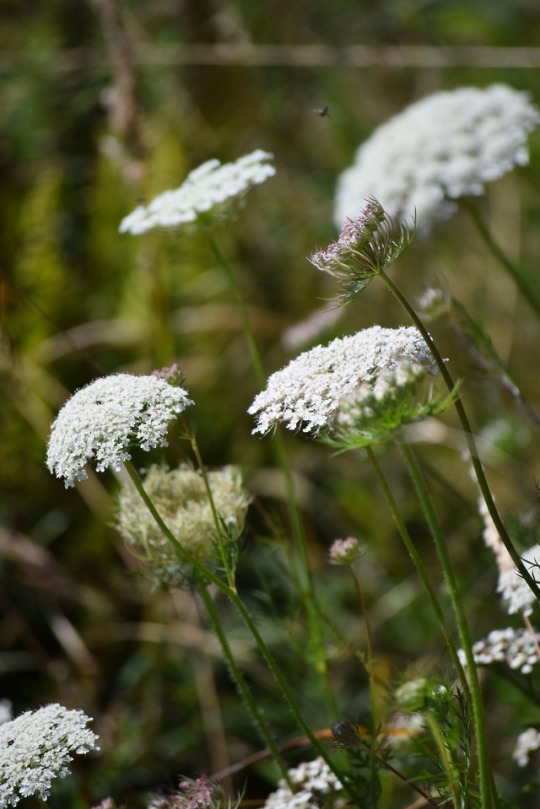
residents (queen anne’s lace, Daucus carota)
cape perpetua, oregon coast
july 20th, 2019
*this resident is a wild carrot and is edible, but it is extremely similar in appearance to poison hemlock, and they often grow side by side.
0 notes
Photo


resident (West Coast lady butterfly, Vanessa annabella)
cape perpetua, oregon coast
july 20th, 2019
*this resident migrates throughout the year, and likes to bask on the ground in the sun.
0 notes
Photo

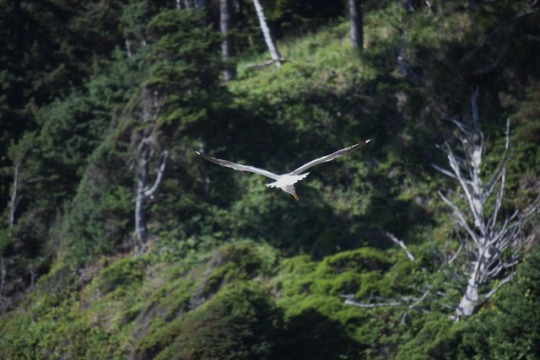
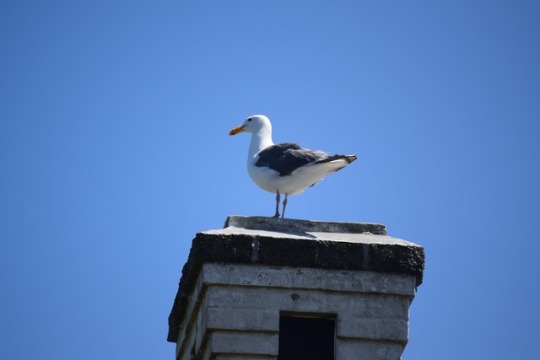

residents (western gulls, Larus occidentalis)
cape perpetua, oregon coast
july 20th & 21st, 2019
*western gulls communicate with a complex series of behaviors and calls that can have many different meanings, depending on context. they flock in groups during the breeding season and often co-mingle with other bird species, but they can be quite territorial and aggressive in defending eggs and chicks. because western gulls primarily find their food in the sea, these residents are threatened by climate change and pollution resulting from oil spills, pesticides, and other human activities.
“Birds of North America.” Birds of North America | American Ornithology, www.americanornithology.org/content/birds-north-america.
0 notes
Photo


resident (common fig, Ficus carica)
kerns, northeast portland
july 18th, 2019
*this resident has a symbiotic relationship with fig wasps (Blastophaga psenes) wherein a female fig wasp will crawl into the figs, pollinating some of the flowers. she then lays her eggs inside the fig and dies. the figs give the wasp’s offspring safe haven to mature and hatch (Blackburne-Maze, 2003). however, the fig grows widely and fig wasps are not present in colder climates, such as the pacific northwest.
Blackburne-Maze, Peter (2003). Fruit: an Illustrated History. Buffalo, New York: Firefly Books. pp. 209–11. Retrieved March 22, 2017.
0 notes
Photo



resident (garden nasturtium, Tropaeolum majus)
kerns, northeast portland
july 18th, 2019
*this resident supports other residents like the dot moth and the garden carpet moth, when they are still in the larval stages. at dusk, the flowers sometimes appear to emit small flashes - this was once thought to be an electrical phenomenon but it’s now thought to be an optical reaction.
0 notes
Photo
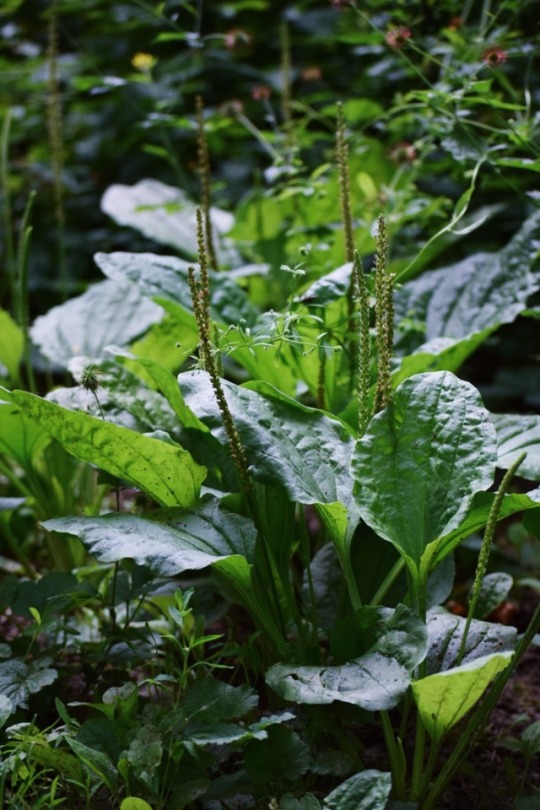

resident (common plantain, Plantago major)
forest park, northwest portland
july 7th, 2019
*this resident can be found all over your neighborhood. common plantain often grows where the ground has been disturbed by human activity, and helps rehabilitate hard-packed soil while preventing erosion.
0 notes
Photo
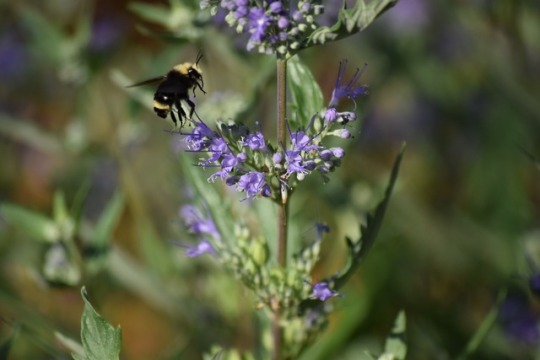
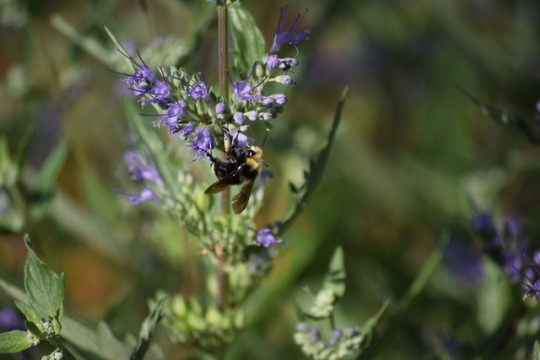

resident (yellow-faced bumble bee, Bombus vosnesenskii)
kerns, northeast portland
july 2nd, 2019
*while this resident is still very common, they nest underground and there is evidence that the increasing presence of pavement in urban environments has a negative impact on their habitat and similarly affects other bumble bee species who are experiencing population decline. restoring and managing urban habitats with these residents in mind could help mitigate the decline of pollinators, and support this resident and many others (Jha & Kremen, 2013).
Jha, Shalene; Kremen, Claire (2013-01-08). "Resource diversity and landscape-level homogeneity drive native bee foraging". Proceedings of the National Academy of Sciences. 110 (2): 555–558.
0 notes
Photo

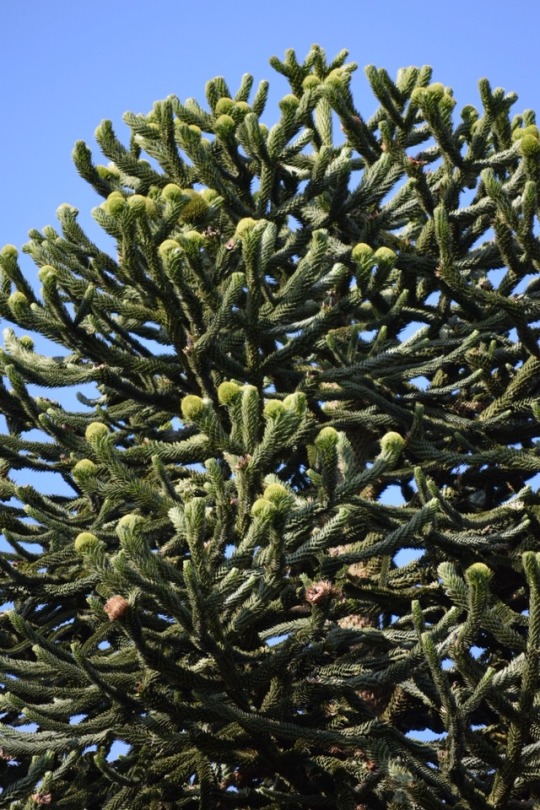
resident (monkey puzzle tree, Araucaria araucana)
kerns, northeast portland
july 4th, 2019
*this resident is native to chile and argentina, but grows well in the pacific northwest. this resident is endangered. they are considered a living fossil, which means they are an organism that has remained fairly steady over time, and strongly resembles other organisms that we only know about from the fossil record. losing this tree would mean losing many thousands of years of history.
0 notes